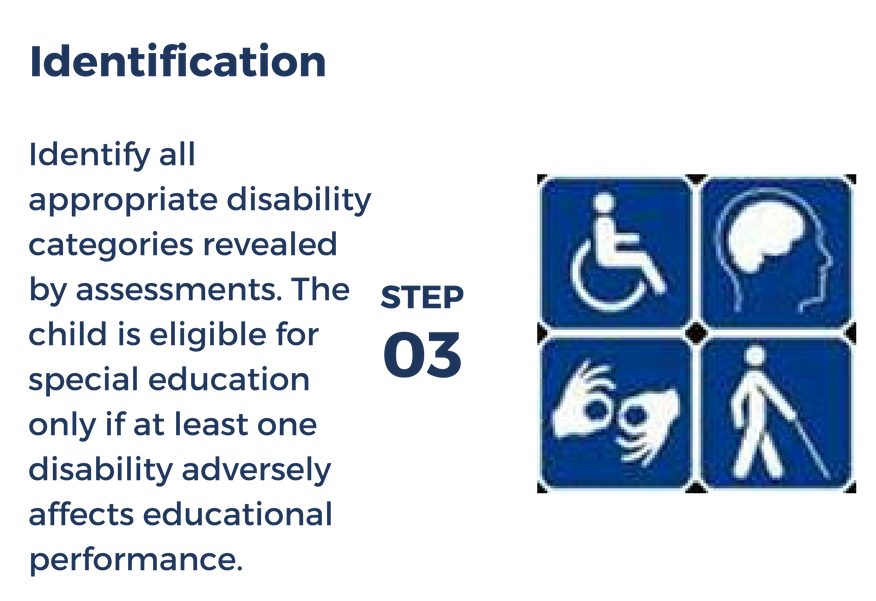The third step in the special education process is identification. Once the evaluations have been reviewed, a group of qualified professionals and the parents decide whether the child has at least one of the 13 disabilities listed in the IDEA. Federal law requires that parents be involved in this process.
Reviewing the Assessments
Most school districts will hold a separate meeting prior to the IEP meeting to discuss eligibility. At this meeting, the school district should explain the child’s assessment results to you. The child’s assessment should be explained by the assessors who evaluated the child. They should discuss what they did, why they used the various assessments they chose, the child’s results on those tests or other evaluation procedures, and explain what the scores mean when compared to other children of the same age and grade.
Some school districts may rush through the evaluation results at the beginning of the IEP meeting. This is unacceptable as it does not give you time to read through them, ask questions, or research whether the assessments used were appropriate for your child given other disabilities and challenges they may have. Always ask for a separate meeting to review assessments and eligibility prior to any IEP meeting.
ADVOCACY TIP
Identify All Disability Categories Which Apply
In order to fully meet the definition (and eligibility for special education and related services) as a “child with a disability,” a child’s educational performance must be adversely affected due to the disability.



